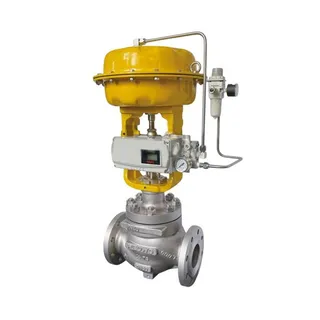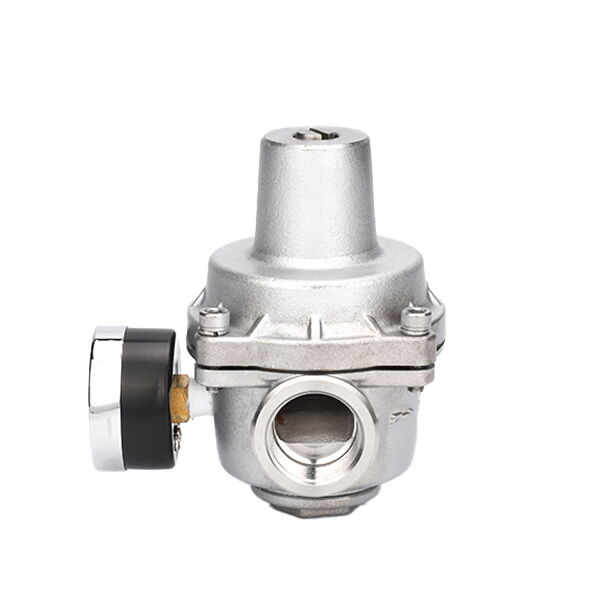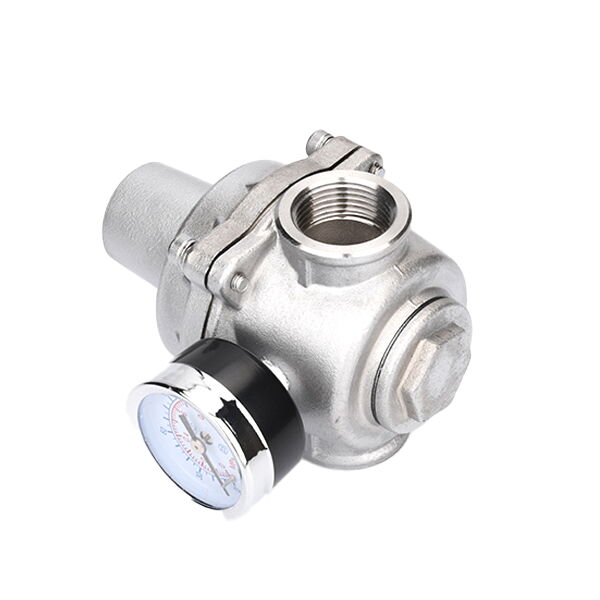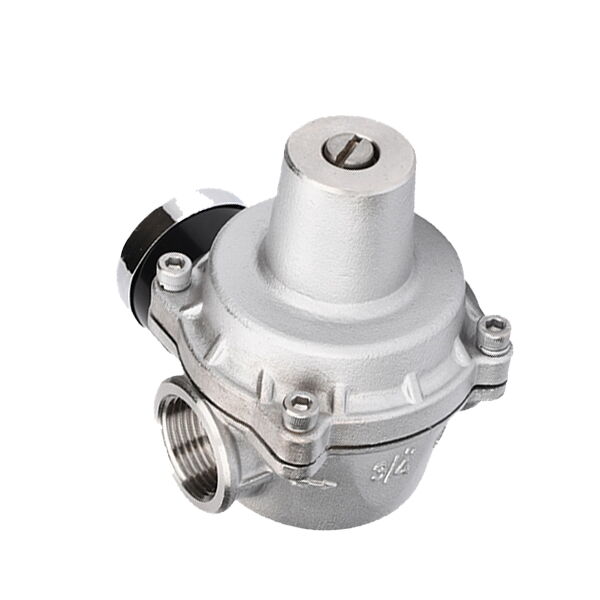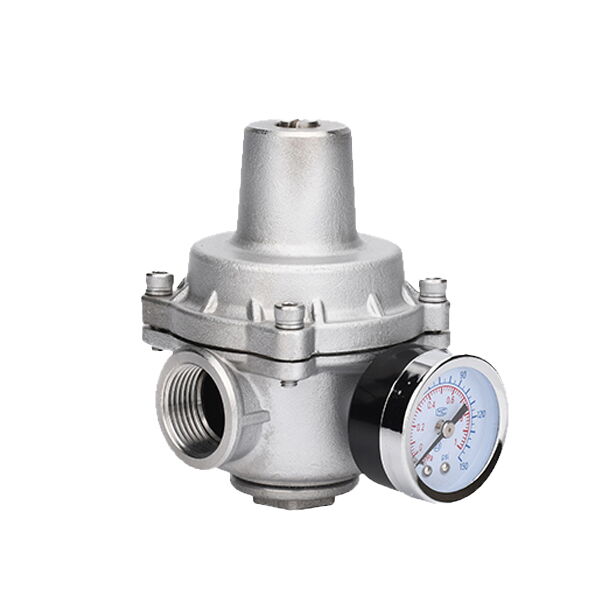
(API 624 Additional High Temperature Version)
Key Specifications / Features
This stainless steel pressure reducing valve is manufactured in SS 304, SS 316, SS 304L and SS 316L materials for corrosion resistance. Available in DN15 to DN50 (1/2" to 2") sizes with threaded connections, it is designed specifically for tap water applications. The valve provides reliable pressure regulation for residential, commercial and industrial water systems, helping maintain consistent downstream pressure while protecting plumbing infrastructure.
- Model No.: MV-20250711-PRV-01
- Hits: 7
- Categories: Low Emission Control Valves
- Tags: Stainless Steel Pressure Reducing Valve, SS 304 Pressure Reducing Valve, SS 316 Pressure Reducing Valve
Detail Information
Product Name: Pressure Reducing Valve for Tap Water
Body Material: Stainless Steel, SS 304, SS 316, SS 304L, SS 316L
Size Range: DN15-DN50, 1/2-2 Inch
Pressure Adjustment Range: 0.1MPa-0.5MPa, 1-5 kg
End Connection: Threaded
Medium: Tap Water
Matched with Fittings
PPR/PVC/PE 20*2.5 pipe uses DN15 pressure reducing valve
PPR/PVC/PE 25*2.5 pipe uses DN 20 pressure reducing valve
PPR/PVC/PE 32*2.5 pipe uses DN 25 pressure reducing valve
Note: The pipe diameter refers to the outer diameter, and the valve diameter refers to the inner diameter.
Please carefully check the pictures or details about the diameter before purchasing. Incorrect purchase cannot be installed.
Pressure Reducing Valve Corresponding Installation Pipe and Fitting Specification Table
|
Diameter |
Pipe Outer Diameter |
Hot Melt Joint Specification |
Double Thread Joint Specification |
||
|
DN15 |
1/2 Inch |
PPR/PP/PVC/PE 20mm |
20mm |
DN15 |
1/2 Inch |
|
DN20 |
3/4 Inch |
PPR/PP/PVC/PE 25mm |
25 mm |
DN20 |
3/4 Inch |
|
DN25 |
1 Inch |
PPR/PP/PVC/PE 32mm |
32 mm |
DN25 |
1 Inch |
|
DN32 |
1-1/4 Inch |
PPR/PP/PVC/PE 40mm |
40 mm |
DN32 |
1-1/4 Inch |
|
DN40 |
1.5 Inch |
PPR/PP/PVC/PE 50mm |
50 mm |
DN40 |
1.5 Inch |
|
DN50 |
2 Inch |
PPR/PP/PVC/PE 63mm |
63 mm |
DN50 |
2 Inch |
|
Note: Pipes are usually indicated by outer diameter, and valves by inner diameter. On the pipe, there will be a marking indicating the diameter, as shown in the figure. The above specifications are standard matches. For example, if a PPR25 pipe wants to use a 25 diameter valve, then the corresponding fitting should be matched. The pressure reducing valve thread is R-type conical thread for better sealing and leak prevention. |
|||||
Note: Pipes are usually indicated by outer diameter, and valves by inner diameter. On the pipe, there will be a marking indicating the diameter, as shown in the figure. The above specifications are standard matches. For example, if a PPR25 pipe wants to use a 25 diameter valve, then the corresponding fitting should be matched. The pressure reducing valve thread is R-type conical thread for better sealing and leak prevention.
Pressure reducing valves are specialized devices designed to automatically lower the working pressure in pipelines. They can reduce the higher pressure in the pipeline before the valve to the level required by the downstream pipeline. Pressure reducing valves are widely used in high-rise buildings, urban water supply networks with high pressure, and other areas such as mines to ensure that various water points in the water supply system receive appropriate service water pressure and flow rate. Given that the loss rate and waste degree of water are almost directly proportional to the size of the water pressure in the water supply system, pressure reducing valves have the potential to improve system operation and save water. It is estimated that their water-saving effect is about 30%.
The steps for adjusting the pressure reducing valve are as follows.
1. Close the shutoff valve (main valve) before the pressure reducing valve and open the shutoff valve (tap) after the pressure reducing valve (to release the water in the pipeline, the pressure gauge should show zero pressure). Turn the adjustment screw counterclockwise until it stops (relative to the outlet pressure), then close the shutoff valve after the pressure reducing valve (close the tap).
2. Slowly open the shutoff valve before the pressure reducing valve fully (main valve);
3. Slowly turn the adjustment screw clockwise to adjust the outlet pressure to the required level (using the pressure gauge as a reference, the household can adjust to 2-3 kg, and the pressure gauge range is 0.2-0.3 MPa);
4. If the adjusted outlet pressure is higher than the set pressure, you must start over from step 1.
Similar Products
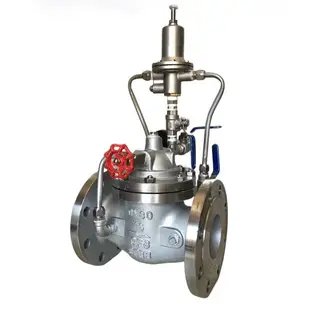
Stainless Steel Pressure Reducing Valve, CF8, CF3, 1-36 Inch
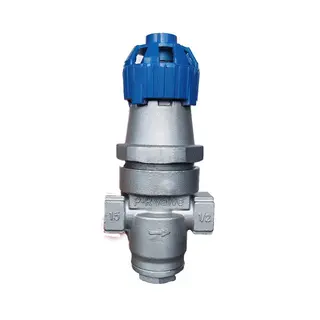
Bellows Type Pressure Reducing Valve, SS 304, DN15-DN25, PN16
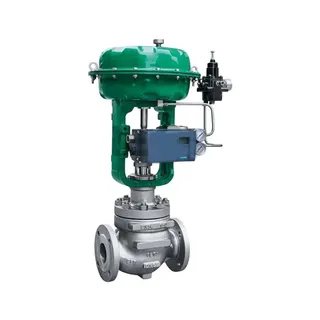
Top Guided Control Valve, 1/2-8 Inch, CL150-600, Unbalanced
